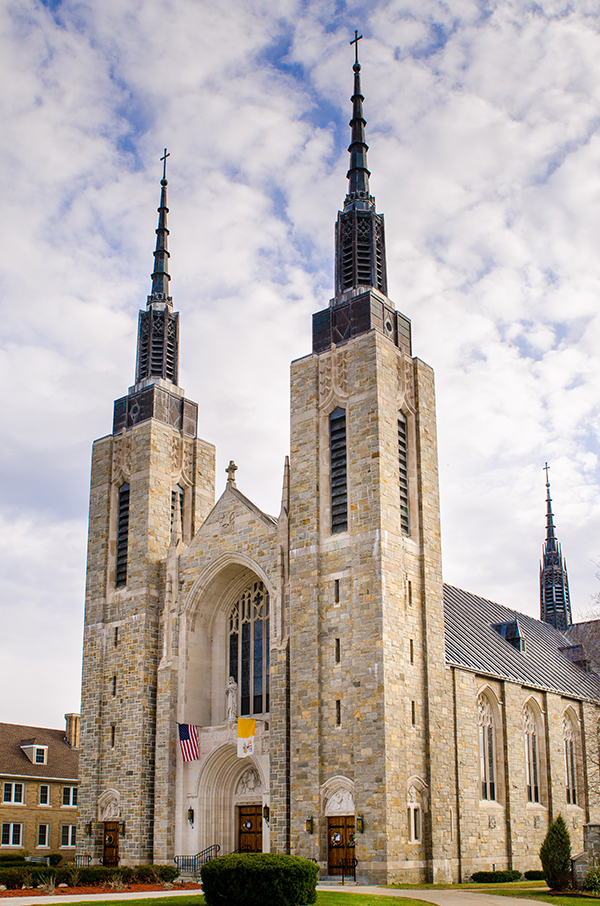
WASHINGTON — The Diocese of Ogdensburg, New York, filed for Chapter 11 bankruptcy July 17, as it faces more than 100 lawsuits alleging clergy sexual abuse from decades ago.
The diocese, in the northern part of the state, is one of six of the state’s eight dioceses that has filed bankruptcy in response to the cost of settling abuse lawsuits. The Diocese of Brooklyn and the Archdiocese of New York are the exceptions.
In the past decade, more than two dozen U.S. dioceses have filed bankruptcy due to the cost of settling abuse claims.
In a video message on the diocesan website, Ogdensburg Bishop Terry LaValley described the decision as a difficult and painful one to make after “extensive prayer and consultation.”
The decision was in response to a wave of nearly 140 lawsuits filed against the diocese during the two-year window provided by the state’s Child Victims Act.
The legislation, signed into law in 2019, extended New York’s statute of limitations for sexual offenses against children and gave survivors more time to press charges and bring lawsuits. The claims filed against the diocese are from the 1940s-1990s, prior to the implementation of diocesan safe environment policies and procedures.
As a result of the legislation, “138 lawsuits previously barred by the statute of limitations were filed against the diocese, some parishes and other related entities,” said Bishop LaValley.
He stressed that claims against the diocese were all more than 20 years old, which he said is evidence of progress made, but still a reminder to “remain vigilant.”
The diocese notes on its website that the costs for litigating or settling these cases “would likely exceed many millions of dollars,” and that the diocese “simply does not have the resources” to do this.
“We have come to realize that reorganization is the best context” for resolving claims “while continuing our mission as a diocese,” the bishop said.
He added that the reorganization “ensures that each survivor receives just compensation” and also eliminates “a race to the courthouse in which the earliest cases settled or brought to judgment exhaust all resources available to pay claims, leaving nothing for victims whose cases are resolved later.”
In a July 17 letter to Catholics in the diocese, Bishop LaValley apologized for the suffering caused by abuse from priests and other Church personnel and stressed that “an important part of our ministry is to respond to claims of survivors in a way that acknowledges what they suffered and to help them find healing and a sense of peace.”
He said the diocese was committed to responding to survivors and their lawsuits “justly and fairly while maintaining our mission to preach the Gospel of Jesus Christ and reach all in need.”
The bishop also said the diocesan reorganization should have “minimal effect on the celebration of the sacraments and regular parish life” but pointed out that it is likely “parishes will be asked to contribute funds available to address survivors’ claims.”
He noted that some diocesan parishes have also been sued in the abuse lawsuits, but he hoped the reorganization would allow the diocese to resolve all claims.
Bishop LaValley also said he is willing to meet with every abuse survivor and that the Diocese hopes to foster reconciliation and healing for those who have suffered from abuse.
A question-and-answer section on the diocesan website about the bankruptcy decision said the diocese didn’t know “if it will be necessary to lay off employees as we reorganize.
“It is not our desire to reduce our workforce. We will try to maintain a satisfactory level of service to our parishes and entities while evaluating the financial realities we face. At the present time, the Diocese does not plan to lay off employees,” it said.
No timetable has been set for the end of the bankruptcy phase, but Bishop LaValley said he would like to see the process conclude in a timely fashion. He reiterated that this is especially a time for prayer. “As we move forward, please pray for and support victims of abuse, our consecrated religious, clergy, and lay faithful and our beloved Diocese,” he said.
